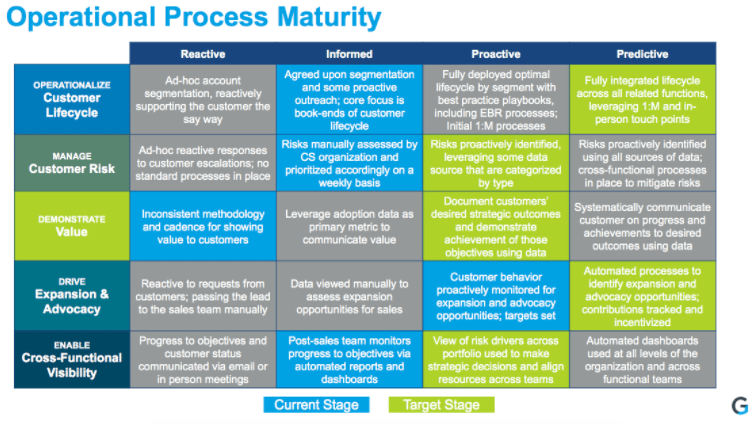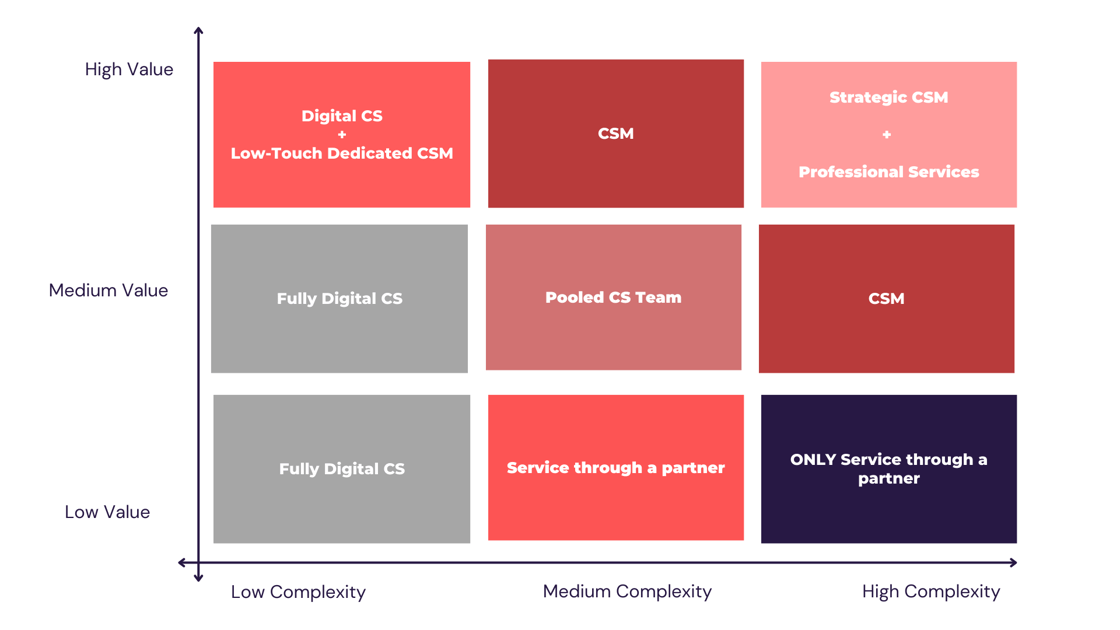#18: Level-Up Your Customer Segmentation
Most businesses start and end segmentation using two variables:
- MRR (or a measure of how much a company spends)
- Company Size
As companies scale, these aren't sufficient to build a flexible and dynamic servicing model, that delivers results for customers and is cost-efficient.
That's because when you only use MRR and Company Size, in one hand you deploy most of your resources to high-value customers even when they don't need or want the white glove touch.
On the other hand, you create a long tail of smaller customers that are poorly supported, driving churn up.
Customer Complexity is the game-changing third variable.
Let’s take a look at how you can blend this into your current strategy and scale better.
Start By Defining Customer Maturity
A Customer Maturity Model looks at the stage your customer operates in. Starting at the simplest version of the process you enable and ending on the most sophisticated end.
A great example is Gainsight's Maturity Model:

Using this model, Gainsight reps can help their customers map their current operational maturity. This works in two ways:
- Drawing a picture of the present
- Building a vision for the future
When you layer the customer's maturity to organisation size, you will get the real picture of customer complexity,
How Can You Capture This Data?
Once you have your Customer Maturity Model, it's time to bring this data to your CRM.
You should start capturing this information during the sales process. This maturity model is a tool that can help the sales rep determine what products to position to the customer.
For your existing customers, you have 2 avenues:
- Leverage the CSM to go through this exercise
- Build a tool that allows customers to rate themselves
At HubSpot, we built the Growth Grader tool to help understand customer maturity at scale.
Once you have the data on customer maturity, you can calculate complexity using a score out of 10. For example:
- Customer Maturity has a 60% weighting
- Customer Size has a 40% weighting
Your weighting should take into account how much company size impacts your servicing model (eg. products that touch multiple departments in large companies tend to require a lot more orchestration).
How Do You Build This Into Segmentation?
Now that you have a score, you can place customers into this 2x2, creating different buckets of complexity (low/medium/high), and value.
The end result will look something like this:

While it might look similar to the original model, you can see that this has brought more nuance to how you service your large MRR accounts. Matching service model to how much it's required to drive their success.
It also makes for a more strategic resourcing structure, as you are more intentional about where you deploy human resources, especially on medium-value accounts.
Summary
Level up your segmentation strategy and scale better by:
- Defining a maturity model
- Calculating a complexity score
- Using a 2x2 matrix to plot customers based on complexity vs. value
- Choosing how you want to service each bucket
As you grow into this model there are many more things you can consider (eg. lifetime value). But if you have only been using company size and spending, this is a great first step!
That's it for today folks.
See you next week!
-3.png?width=200&height=88&name=This%20is%20growth%20(1)-3.png)
.png)
.png)
.png)